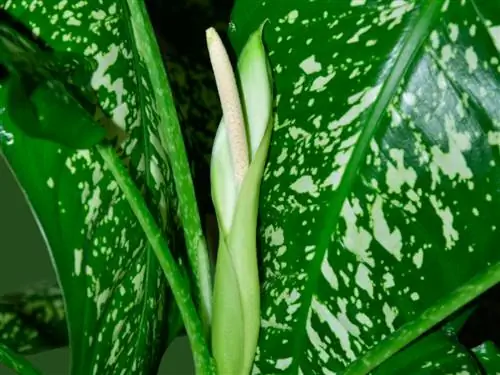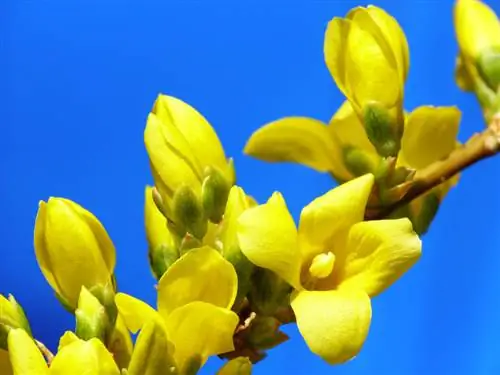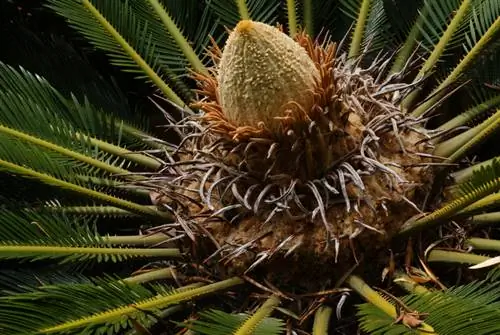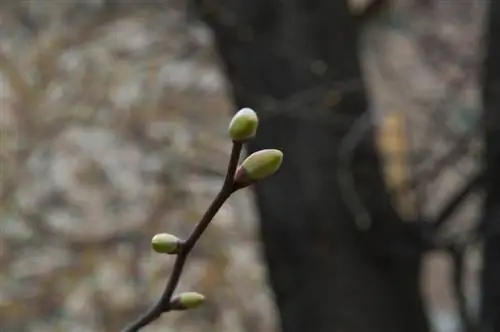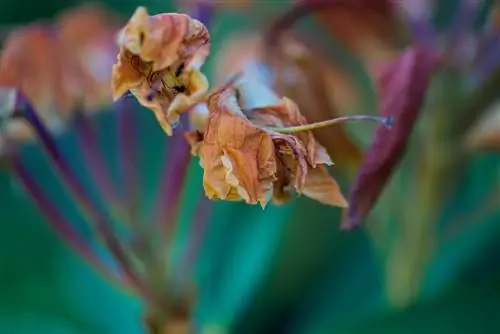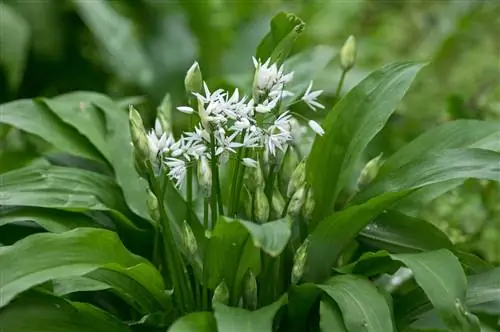- Author admin [email protected].
- Public 2023-12-16 16:46.
- Last modified 2025-01-23 11:21.
Dieffenbachia is mainly cultivated for its beautifully colored leaves. However, older plants can also flower. Even if they appear rather inconspicuous, they are a small highlight for many plant lovers.
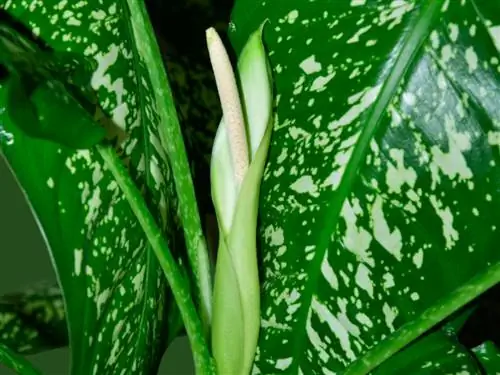
What does the Dieffenbachia flower look like?
The Dieffenbachia flower is inconspicuous with a green spathe and a spadix that contains both male and female flowers. Seed formation is rare because they are often hybrids that are incapable of fertilization. Flowers are not a highlight, so removing the buds is recommended.
Appearance of the flowers
The flowers are quite inconspicuous and consist of a green leaf, the spathe, which surrounds the spadix relatively tightly. They look so similar to a new leaf that the flower is sometimes overlooked.
Male and female flowers on one plant
This arum plant has both male and female flowers on one inflorescence, which is the small spadix in the strikingly colored bract. There are a few rows of sterile flowers between the male and female flowers.
Male and female flowers do not ripen at the same time. This is intended by nature to ensure the fertilization of different flowers and thus the wide dispersal of the seeds.
Formation of seeds
Regardless of the structure of the flower, seeds unfortunately rarely form, as the ornamental plants are usually hybrids that are incapable of fertilization. If the plant has produced several flowers, you can imitate the work of beetles and flies and try to do the fertilization with a brush.
If small seeds actually form, they may even be able to germinate:
- Put seeds in water overnight.
- Pour potting soil into a bowl and sprinkle seeds.
- Cover a thin layer of soil and moisten with a sprayer (€9.00 on Amazon).
- Place a transparent lid to create a microclimate favorable for germination.
- Air daily and keep moist.
Tip
When the Dieffenbachia blooms, it puts all its strength into this process. This can greatly weaken the plant, which is primarily cultivated for its pretty foliage. That's why it's recommended to cut out the buds.

